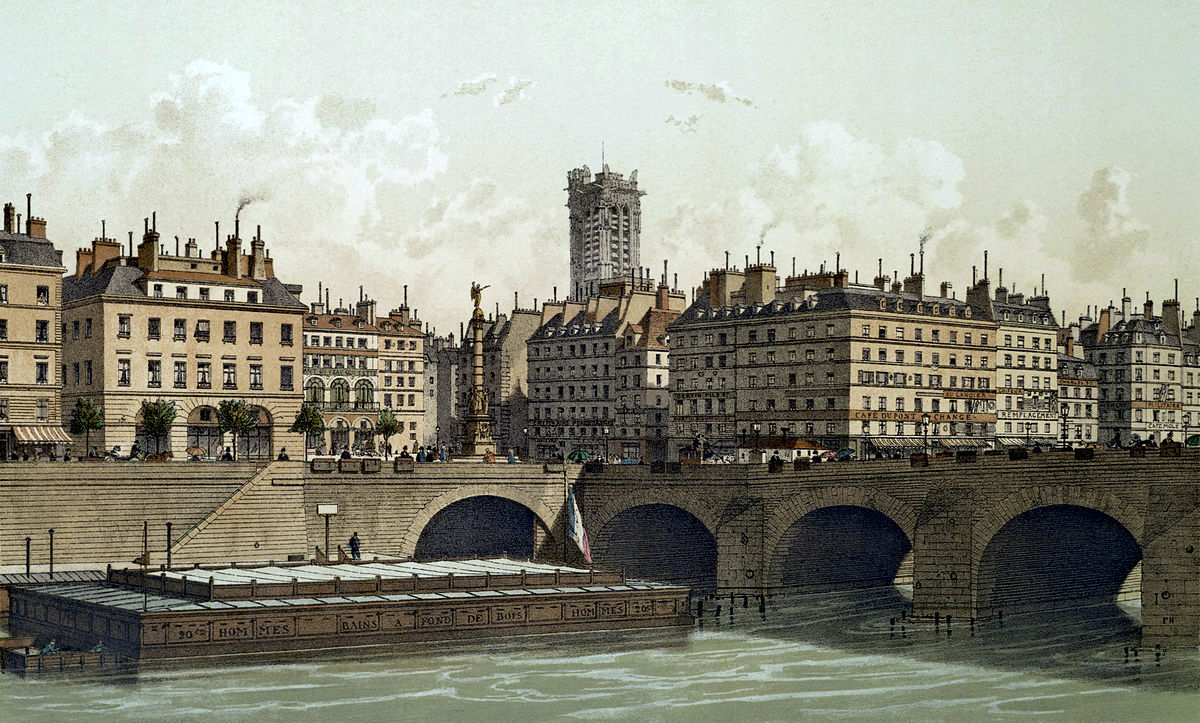
Paris during the Bourbon Restoration
Paris, FranceFollowing the downfall of Napoleon after the defeat of Waterloo on 18 June 1815, 300,000 soldiers of the Seventh Coalition armies from England, Austria, Russia and Prussia occupied Paris and remained until December 1815. Louis XVIII returned to the city and moved into the former apartments of Napoleon at the Tuileries Palace. The Pont de la Concorde was renamed "Pont Louis XVI", a new statue of Henry IV was put back on the empty pedestal on the Pont Neuf, and the white flag of the Bourbons flew from the top of the column in Place Vendôme.
The aristocrats who had emigrated returned to their town houses in the Faubourg Saint-Germain, and the cultural life of the city quickly resumed, though on a less extravagant scale. A new opera house was constructed on Rue Le Peletier. The Louvre was expanded in 1827 with nine new galleries that put on display the antiquities collected during Napoleon's conquest of Egypt.
Work continued on the Arc de Triomphe, and the new churches in the neoclassical style were constructed to replace those destroyed during the Revolution: Saint-Pierre-du-Gros-Caillou (1822–1830); Notre-Dame-de-Lorette (1823–1836); Notre-Dame de Bonne-Nouvelle (1828–1830); Saint-Vincent-de-Paul (1824–1844) and Saint-Denys-du-Saint-Sacrement (1826–1835). The Temple of Glory (1807) created by Napoleon to celebrate military heroes was turned back into a church, the church of La Madeleine. King Louis XVIII also built the Chapelle expiatoire, a chapel devoted to Louis XVI and Marie-Antoinette, on the site of the small Madeleine cemetery, where their remains (now in the Basilica of Saint-Denis) were buried following their execution.
Paris grew quickly, and passed 800,000 in 1830. Between 1828 and 1860, the city built a horse-drawn omnibus system that was the world's first mass public transit system. It greatly speeded the movement of people inside the city and became a model for other cities. The old Paris street names, carved into stone on walls, were replaced by royal blue metal plates with the street names in white letters, the model still in use today. Fashionable new neighborhoods were built on the right bank around the church of Saint-Vincent-de-Paul, the church of Notre-Dame-de-Lorette, and the Place de l’Europe. The "New Athens" neighbourhood became, during the Restoration and the July Monarchy, the home of artists and writers: the actor François-Joseph Talma lived at number 9 Rue de la Tour-des-Dames; the painter Eugène Delacroix lived at 54 Rue Notre-Dame de-Lorette; the novelist George Sand lived in the Square d'Orléans. The latter was a private community that opened at 80 Rue Taitbout, which had forty-six apartments and three artists' studios. Sand lived on the first floor of number 5, while Frédéric Chopin lived for a time on the ground floor of number 9.
Louis XVIII was succeeded by his brother Charles X in 1824, but new the government became increasingly unpopular with both the upper classes and the general population of Paris. The play Hernani (1830) by the twenty-eight-year-old Victor Hugo, caused disturbances and fights in the theater audience because of its calls for freedom of expression. On 26 July, Charles X signed decrees limiting freedom of the press and dissolving the Parliament, provoking demonstrations which turned into riots which turned into a general uprising. After three days, known as the ‘’Trois Glorieuses’’, the army joined the demonstrators. Charles X, his family and the court left the Château de Saint-Cloud, and, on 31 July, the Marquis de Lafayette and the new constitutional monarch Louis-Philippe raised the tricolor flag again before cheering crowds at the Hôtel de Ville.
